LaserDisc Collection
"A Little Something Extra"
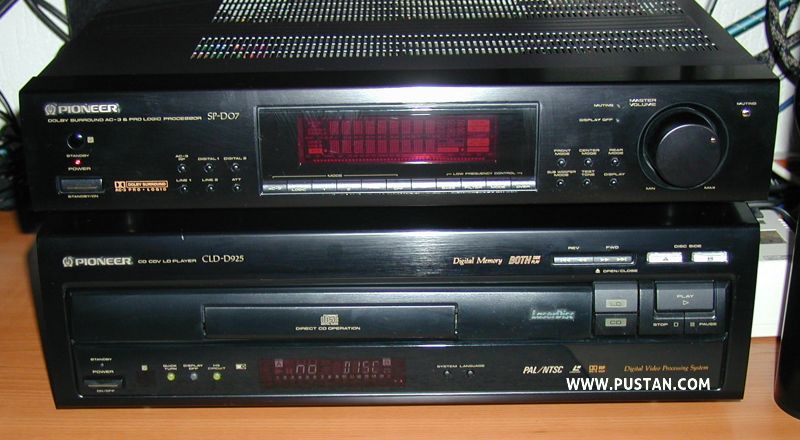
My LaserDisc journey started in 1994 with a Pioneer CLD-2850, this was way before digital cameras became popular, so there is no picture of this unit in my possession. Around 1996 I sold that player to buy the new CLD-D925, which in hindsight was not really any better, but offered more outputs and functionality. On the picture you can see it paired with the Pioneer SP-D07 Dolby Surround AC-3 & Pro Logic Processor.
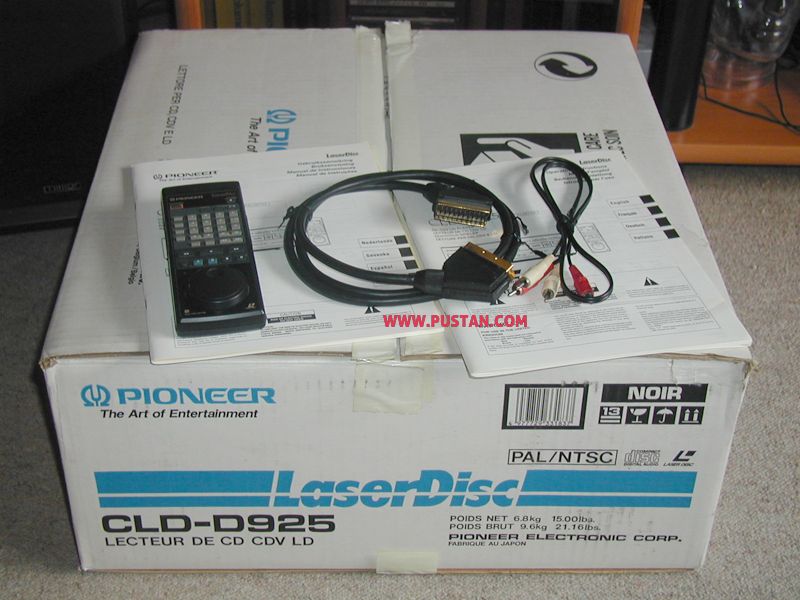
As many of you probably came late to the game and bought your players used, I assume not everyone knows what the original box it came in looked like. The MONSTER scart cable was an optional purchase, the player did not include any video cables iirc.
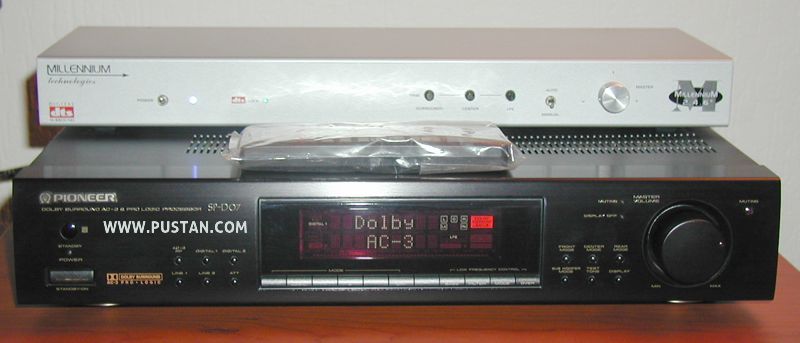
The Pioneer SP-D07 was a surround processor that could also demodulate AC-3 RF from LaserDisc and had an LRCS input as used by many MUSE Hi-Vision decoders (more on that later) BUT could not do dts - Now that silver thing on top of it is a Millennium 2.4.6 dts Decoder that could decode dts into analog 5.1 and bypass digital PCM as is.
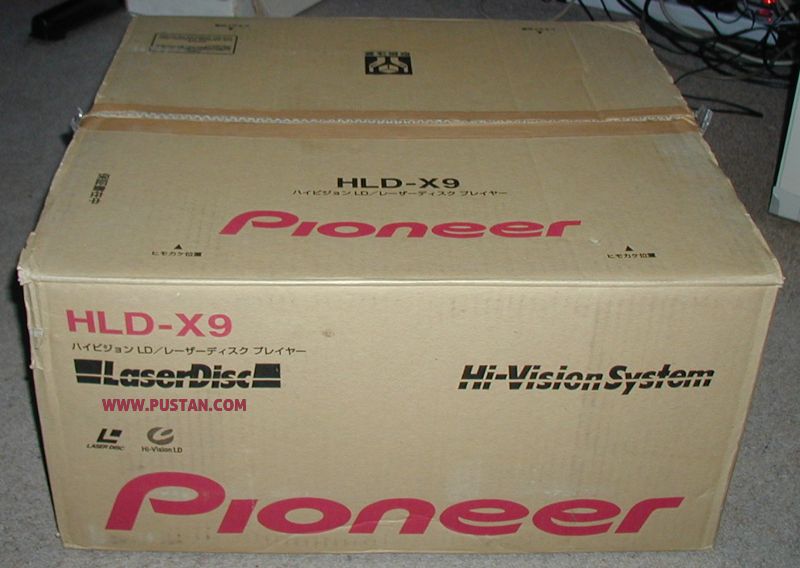
Fast forward to the year 2004 I pulled the plug and imported what came in this inconspicuous box.
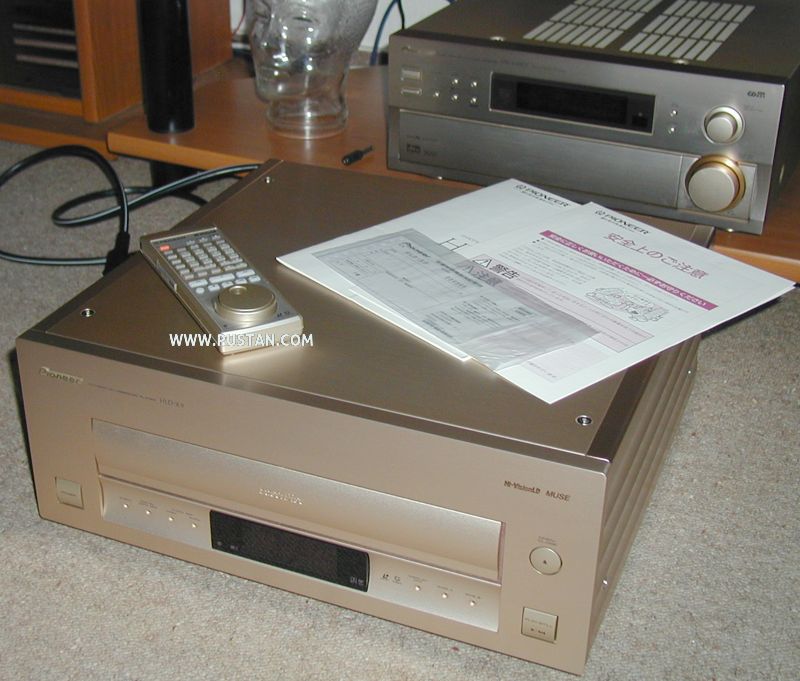
Once the beast unleashed its power I sold my CLD-D925 because I simply did not use it anymore. The HLD-X9 is a player designed for the Japanese market and thus will only play NTSC and Hi-Vision LD's and back in the day on a CRT display looked MUCH better than the European flagship player (which I nicknamed "kleine Rappelkiste" in comparison to the X9). In the background you can also see the Pioneer VSX-908 which I had back then, and would have probably not given away if it had not started malfunctioning while still being in warranty.
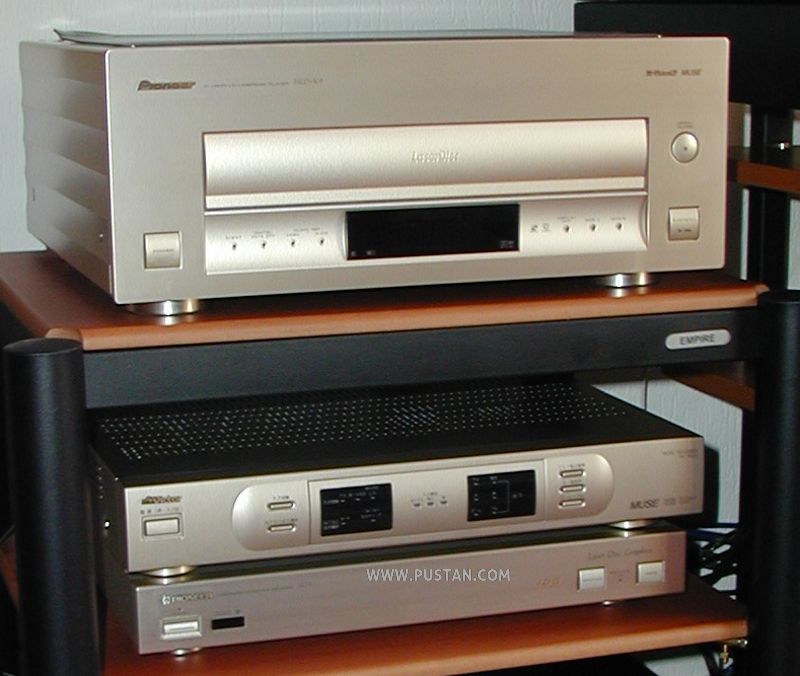
So once settled in I also got interested in MUSE Hi-Vision which was probably a giant mistake as it needs a lot of funding for only a little return, but it was a funny journey anyhow especially if you consider the fact that HD-DVD and Blu-ray did not exist at all yet, and HDTV (in Germany) was not yet available to consumers. In the compartment below the X9 is the Victor HV-MD2 MUSE Decoder, which can also convert MUSE to NTSC, which was important to me back then because HD displays were more or less impossible to get at the time. Below that you can also see the Pioneer LG-1 "LaserDisc Graphics Decoder", another thing you should never buy.
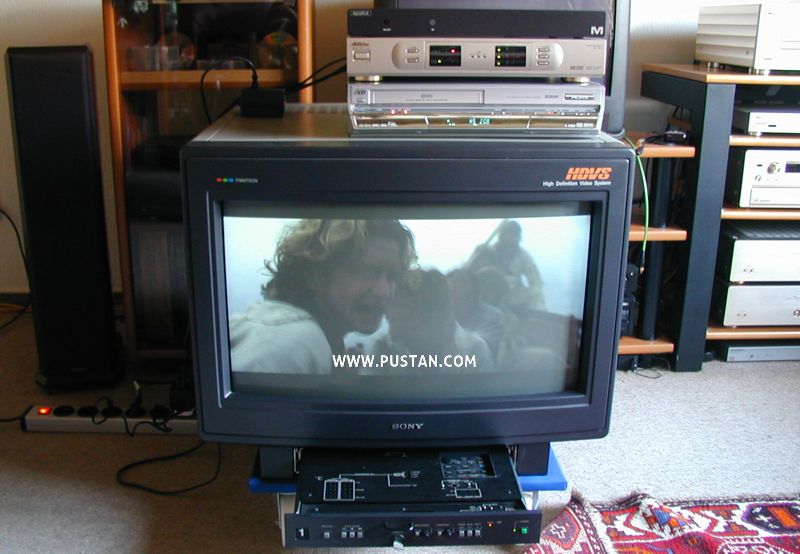
Of course HD down-converted to NTSC does not satisfy you for long, so together with a friend we bought SONY HDM 2830 HDTV monitors: This is professional equipment, 28" 16/9 CRT with BNC inputs it can display either RGB 480p or YPbPr 1080i signals, hence I needed a scaler to play 480i content on it (more about that later). To make it short: The results were spectacular! Especially the scenery discs give you a really nice picture, but be warned the movies can be hit and miss, as what they did back then with the transfers was very experimental. You were more or less a beta-tester so to say.
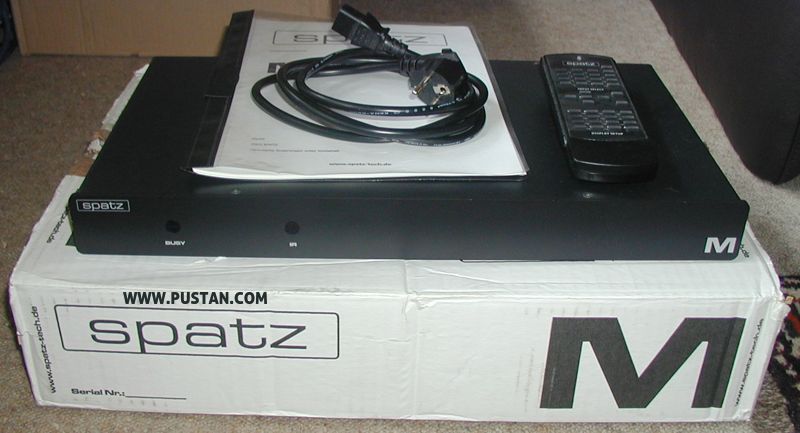
So in order to also view 480i (and PAL) content on that monitor I purchased the SPATZ M Scaler which is a video processor that worked, but this is a whole different world you are stepping into which will ask for even more funds to be spent that you will never be able to justify without going insane.
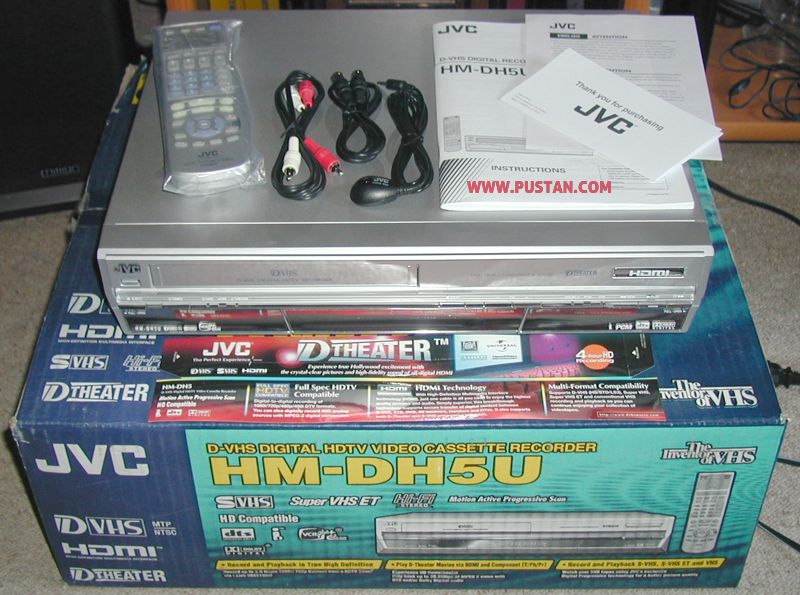
Anyhow, once the HDTV virus had infested every pore in my body I could not resist and bought this JVC HM-DH5U D THEATER player, which you could also call "a digital HDTV video recorder" and plunged into DVHS, which offered a fantastic selection of movies in 1080i with dts and Dolby Digital audio. And the quality easily kicked MUSE Hi-Vision out of the window. D THEATER was only available in the U.S.
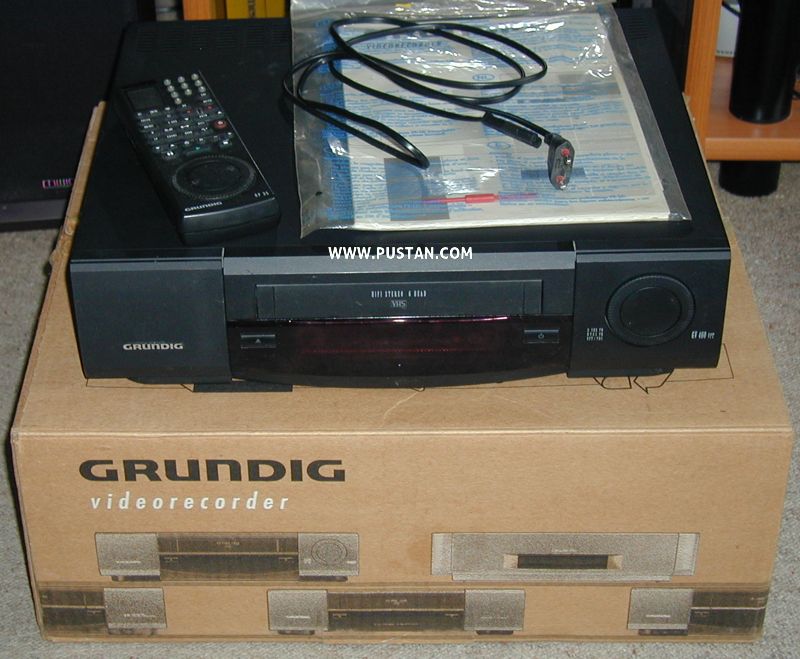
While talking about video recorders, a honorable mention to my GRUNDIG GV 460 (I think that is what it was called) which was a really good unit, until it broke and could not be fixed anymore. RIP.
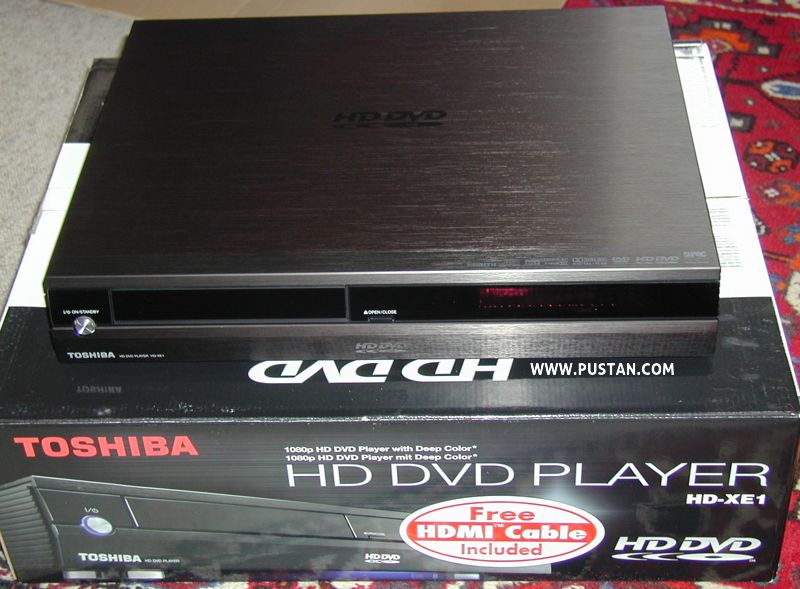
Anyhow f*ck VHS and let us get back to the HDTV madness: Next format to join the family was HD DVD! The Toshiba HD-XE1 is still considered to be the best player ever made, although it is quite noisy and slow, but I suppose Blu-ray players were not better back at that point - anyhow we all know the format war was lost, and if you stayed with the system you know by now that a lot of discs are rotters and the players can render themselves useless due to the " WELCOME Bug ", so in hindsight another investment that did not end well. But wait, not all is lost: as you can see it included a FREE HDMI cable!
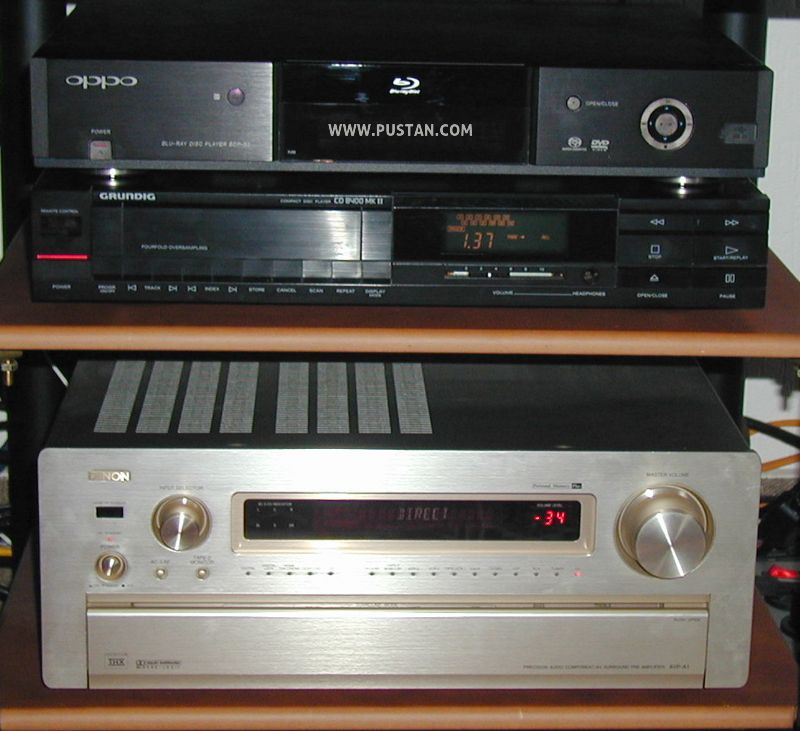
After a while I also pulled the plug for Blu-ray, but I had been patiently waiting for OPPO and the release of it's BDP-83 which could be made region and zone free by unplugging and replacing a cable inside the unit. Below that is a heirloom from my aunt, the GRUNDIG 8400 MK II CD player. One compartment lower is what replaced the defective Pioneer receiver, the DENON AVP-A1 which was back in the day an award winning everyone wanted to have it pre-amp that includes AC3-RF for LaserDisc, but came too early to support dts. No problem here though because it has a 5.1 channel external input where the Millennium decoder plugs into.
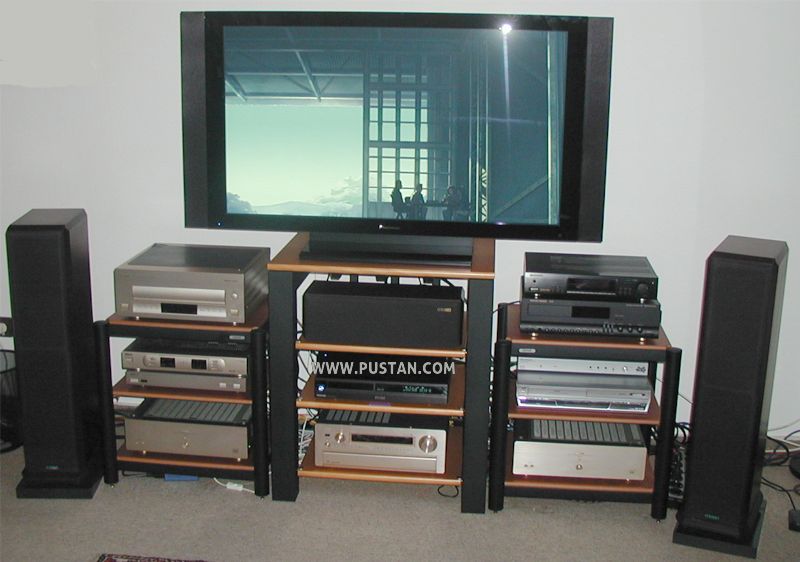
Fast forward again to November 2008 where Pioneer released the Kuro KRP 500A which I bought and got rid of my CRTs. Not a single regret, it is still working and the picture is still brilliant as I am typing this in 2022. On this picture you can see a few additional components that were not mentioned previously: DENON POA-T3 and POA-T10 power amplifiers, a harman/kardon TD470 tape deck that sadly is not working currently and the MISSION front speakers 753 + 75C as a center speaker. Not pictured is the Pixel Magic Crystalio II which came after this picture was taken and a Pioneer CT-W703RS tape deck I got from a good friend.
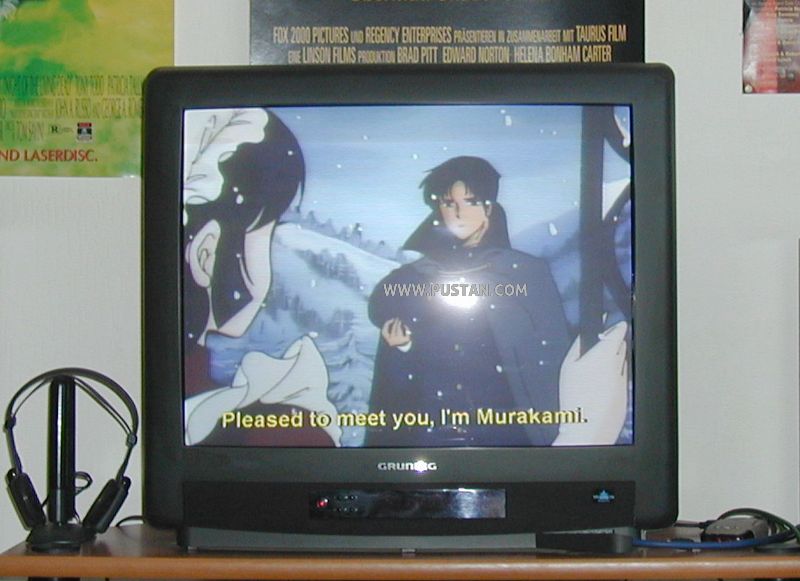
In strong contrast to that here is a picture of my old 28" GRUNDIG 4/3 CRT TV. It was a really nice set, but GRUNDIG being retards at the time they imported the cheapest low quality solder they could get their hands on which resulted in many malfunctions and the set needed quite some repairs. When it got replaced after 13 years it was not in good shape anymore. Anyhow attention to what you might overlook: On the screen is a Japanese anime LaserDisc with superimposed fan-made English subtitles!

So here is the magic box that can make it happen: VINE Micros CORIOgen Eclipse is a genlock that can superimpose things into a video signal (either composite or s-video) using a free software. Basically you can use it to apply subtitles to any LaserDisc you want. Before that I had a MultiGen (also from Vine) which was not as good, especially in terms of resolution.
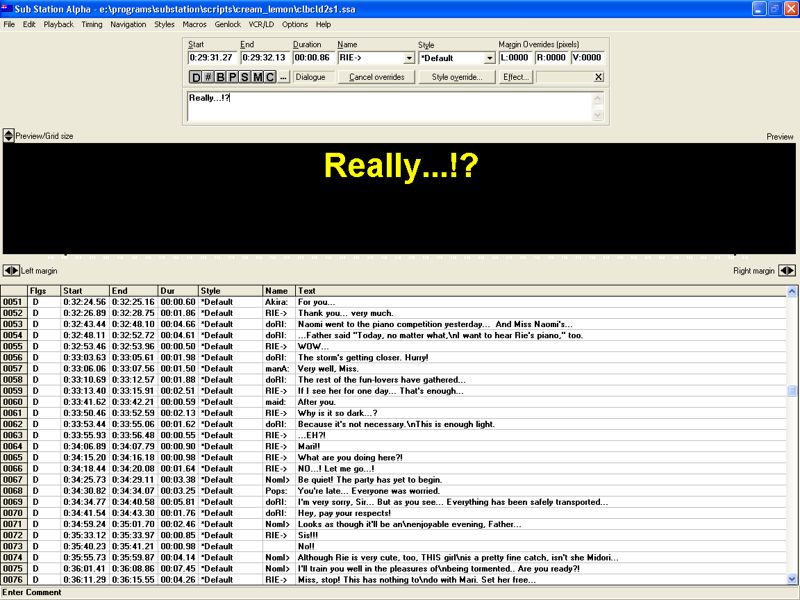
Sub Station Alpha is the name of that free software, which has a "playback" option build in: it switches to a black screen which is invisible for the genlock, so that it will only display whatever text it is thrown at. The comfy thing is the editor to time the subs. Let me warn you this is a very outdated Windows software, which should work on Linux using Wine, but I never tried it there.
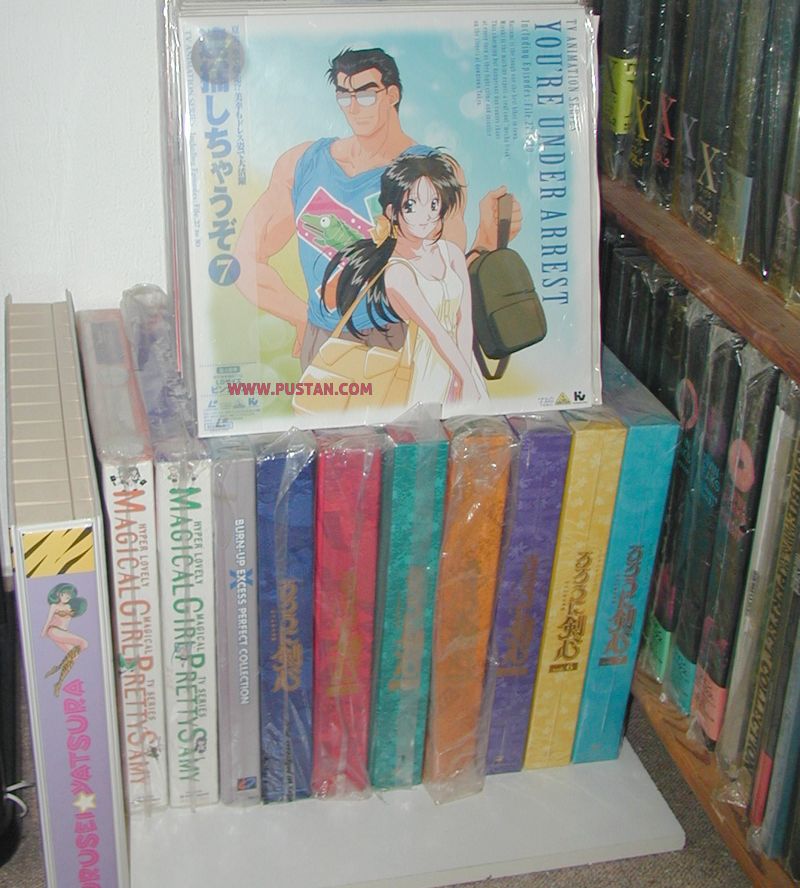
Just to show off here are some pictures of my LaserDisc collection, or storage rather, including some stuff I never watched which is not yet added to the website for that reason: on the right side you can get a glimpse of the complete X-Files season sets and Twin Peaks as well as Millennium. the seven sets in the middle are the complete Rurouni Kenshin TV series, and on top is a pile of yet unwatched LD's.
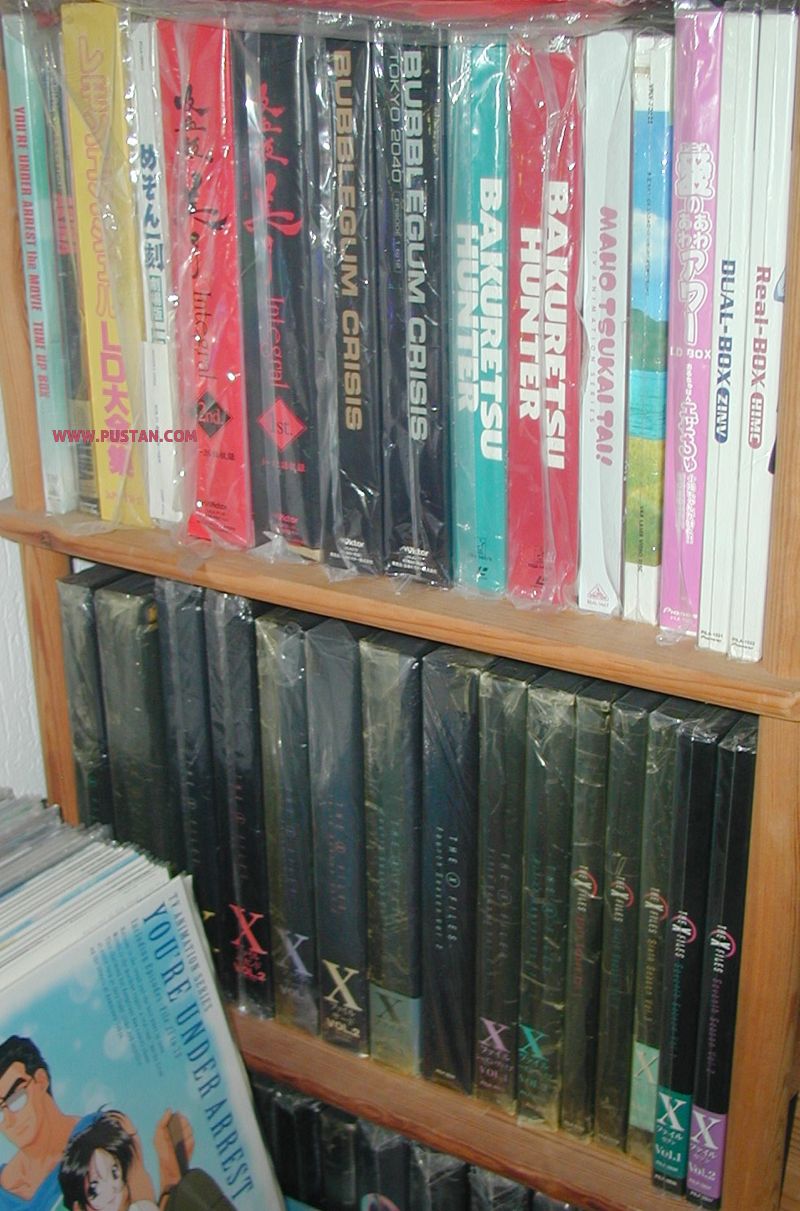
Here you can see the X-Files sets again, and on top of that it is anime madness. Not yet added titles include the Vampire Princess Miyu Integral sets, the Maho Tsukai Tai TV series and the Ebichu box.
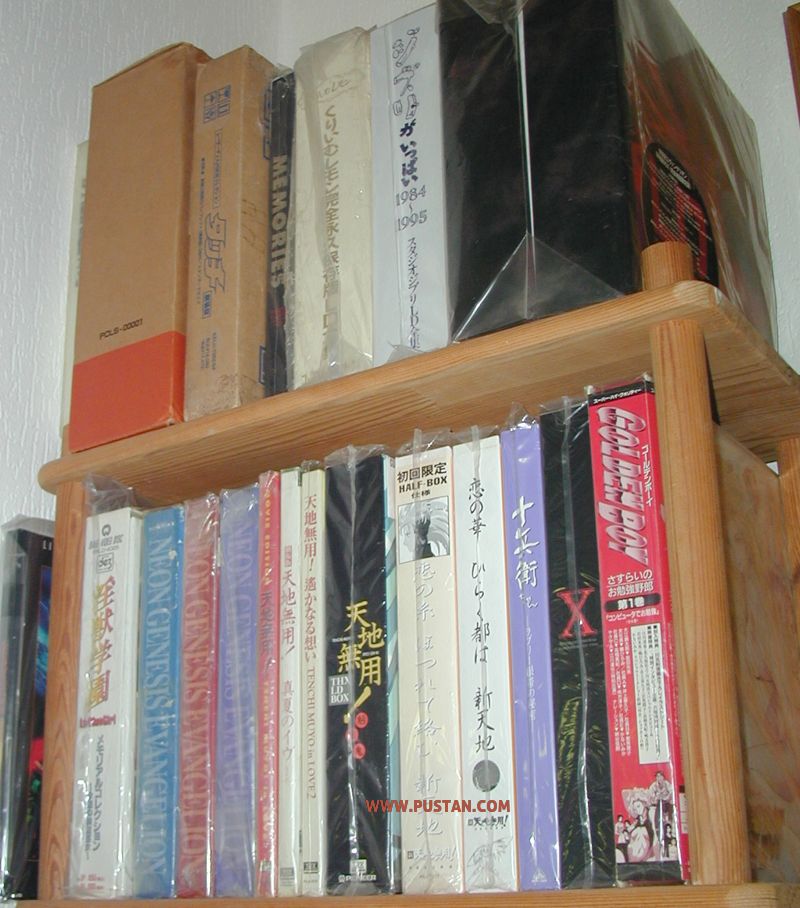
On top of that the anime madness continues: not yet added titles include the Touch Movie Box and PCLS-00001 which Cream Lemon fans will know about.
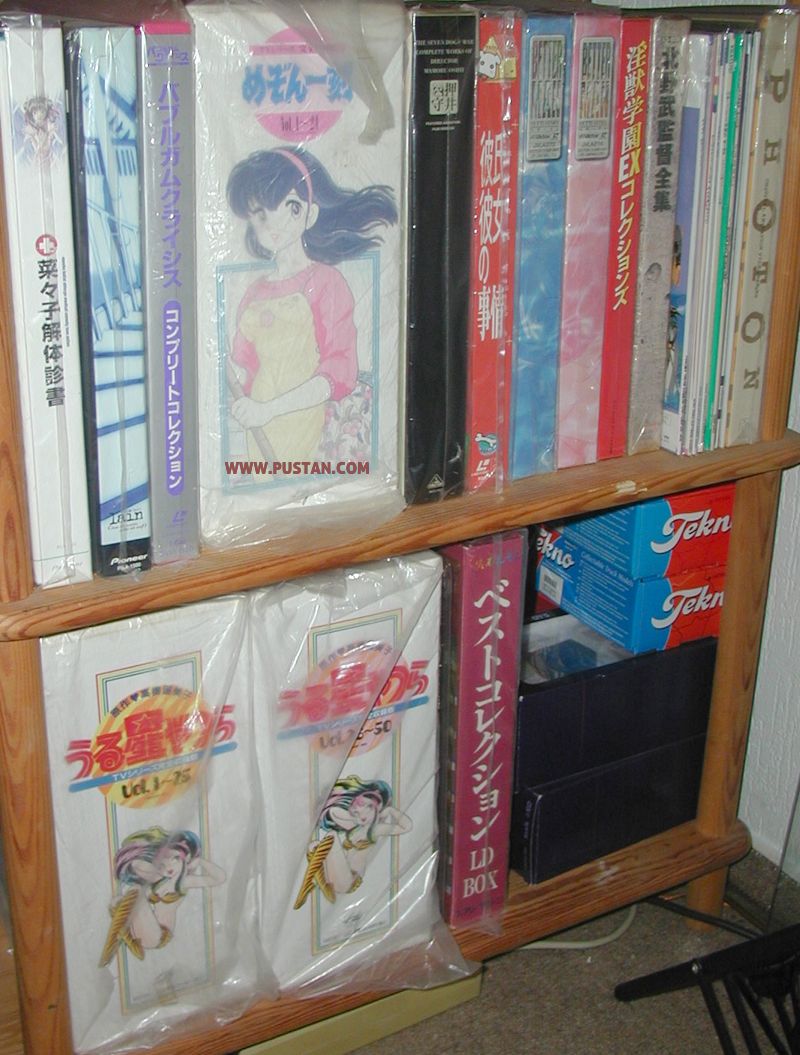
Final picture of the box set madness: as you can see in the bottom compartment is the Urusei Yatsura 50 LD box set - I want to mention it especially because there are some misconceptions about this: Yes, the set is split into two box sets, and I think the reason they did that is because of the weight and size. I mean just imagine you have to lift fifty discs each time you want to access the set. But it was sold as ONE item in a giant shipping box together. Nowadays on used sales you can find the boxes separately, that is why many folks think they were sold separately back in the day as well.

Delicious cheesecake! Always relevant! Yes, I made this myself with a little help from Dr. Oetker. You deserve a piece if you made it this far.